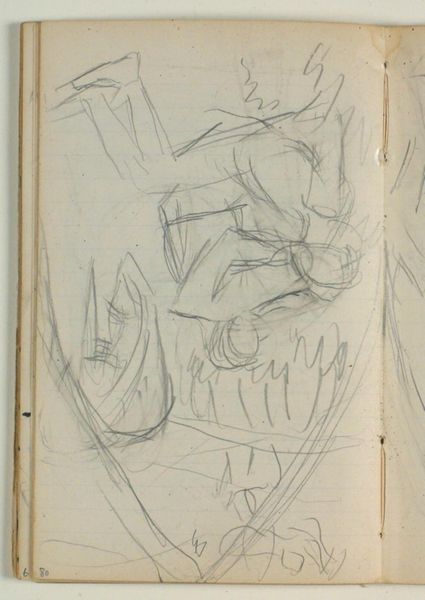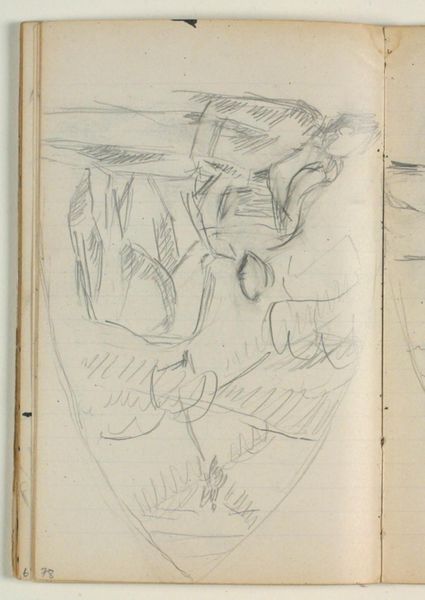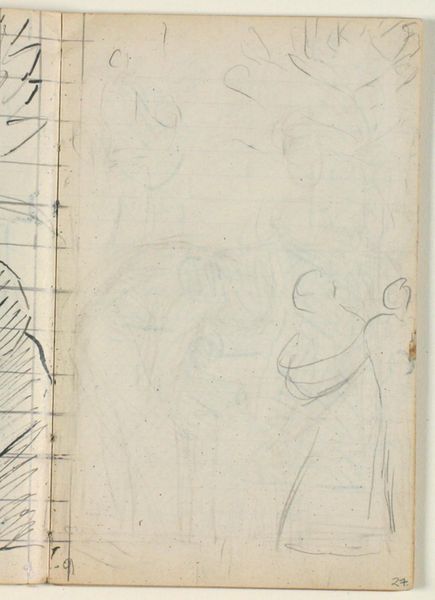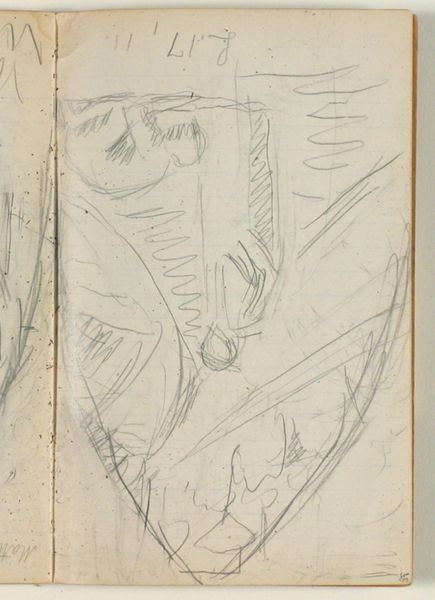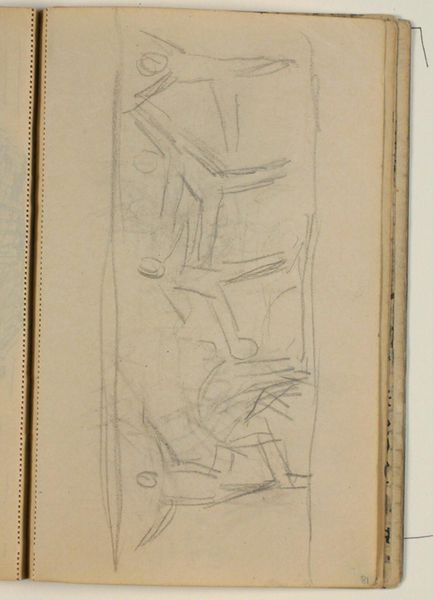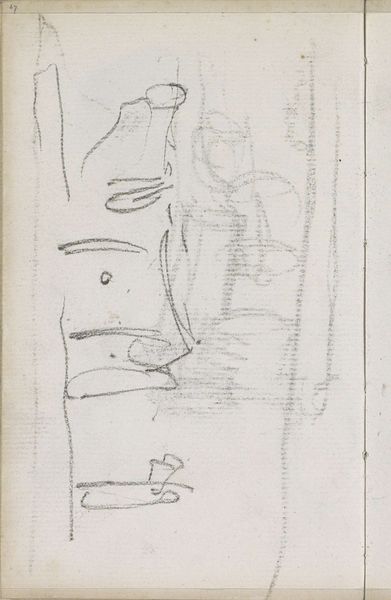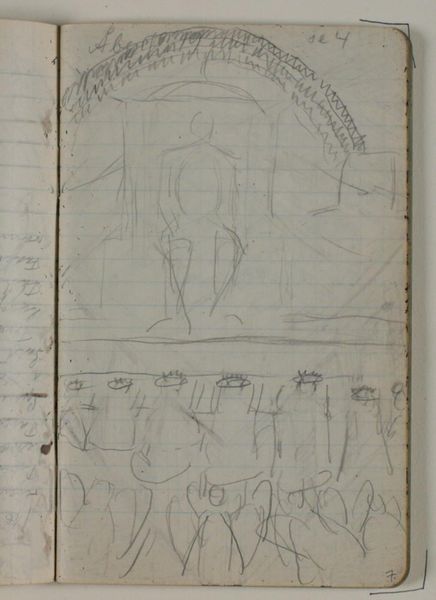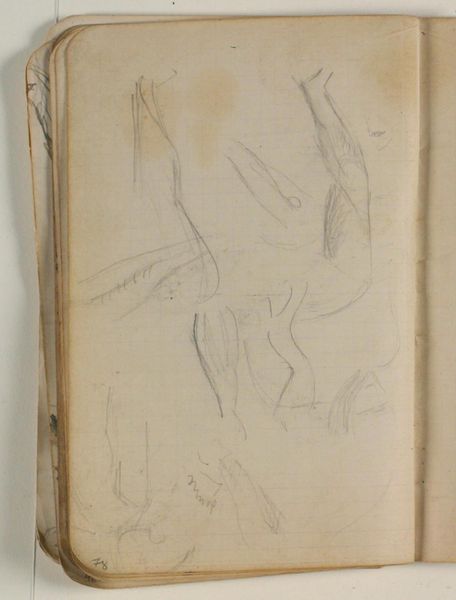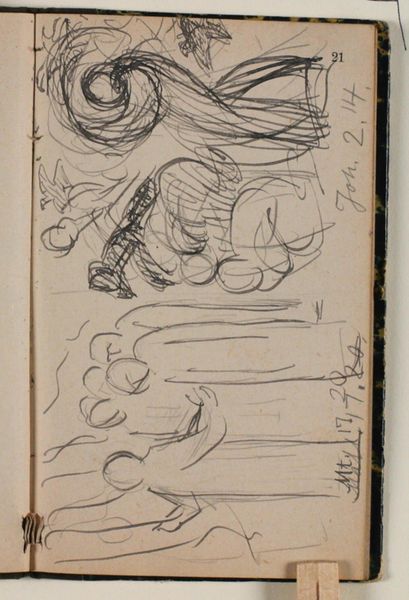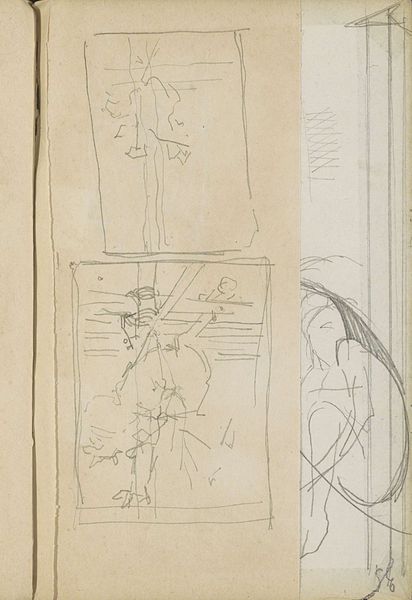
Skitse af maske, formentlig efter forlæg. Udkast til Poul S. Christiansens gravmæle 1932 - 1935
0:00
0:00
drawing, pencil
#
portrait
#
drawing
#
figuration
#
pencil
Editor: This drawing by Niels Larsen Stevns, "Skitse af maske, formentlig efter forl\u00e6g. Udkast til Poul S. Christiansens gravm\u00e6le," created between 1932 and 1935, presents two distinct sketches – one of a mask and another of what appears to be a kneeling figure. Both are rendered in pencil. The sketchiness lends it an almost archaeological feel. What's your interpretation of this work? Curator: What strikes me immediately is the interplay between what we traditionally separate as ‘high’ art and ‘craft.’ Stevns uses the medium of pencil, typically associated with preliminary sketches or studies. Considering this was a potential design for a gravestone, how might the choice of a seemingly 'unrefined' material actually emphasize the labor and materiality involved in remembering the deceased? Editor: That's interesting. I hadn't considered the "labor" aspect of it, and how this choice impacts that. The roughness implies an almost raw emotional quality. Is that intentional? Curator: Precisely. We need to remember the social context here. In the 1930s, ideas around craft and functional objects were being re-evaluated. The directness of the pencil, the clear evidence of the artist's hand – it brings the act of memorializing into stark relief. Where the use of pencil, paper, and quick lines show, it reminds you this is an object created by human means for a human process of memorial. Do you think it elevates it or detracts from it as a concept for the grave site? Editor: It makes it feel more human, like something deeply considered rather than coldly produced, though I can see where that distinction could blur based on viewer. I do like the direct approach, thinking of the drawing process adds weight to it. Thank you for broadening my view. Curator: It highlights how seemingly simple choices about materials and techniques reflect much larger ideas about labor, value, and memory. Thinking about how we connect the materials used, like simple pencil on paper, to the process changes how we value them, and in this case perhaps how we understand a piece connected to mourning.
Comments
No comments
Be the first to comment and join the conversation on the ultimate creative platform.
